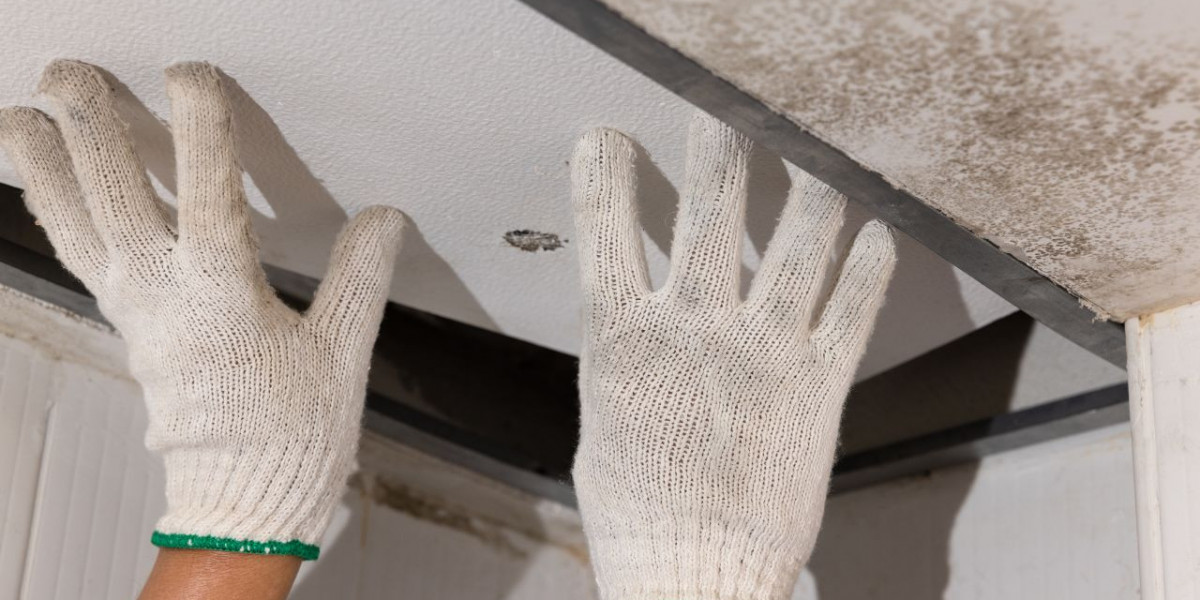In this comprehensive guide, we'll delve into the importance of timely ceiling leak repairs. We'll explore the different causes of ceiling leaks, the potential damage they can cause, and the steps you need to take to address them swiftly and effectively.
Common Causes of Ceiling Leaks
Leaks can originate from various sources, both inside and outside your home. Here's a breakdown of some of the most common culprits:
Roof Leaks: This is the most frequent cause of ceiling leaks. Damaged shingles, clogged gutters, faulty flashing around chimneys or vents – all these can allow water to seep into your roof and eventually drip down into your living space.
Plumbing Issues: Leaky pipes, malfunctioning appliances, or faulty connections behind walls can cause water to accumulate and seep through ceilings.
Condensation: In poorly ventilated areas, especially bathrooms and kitchens, condensation can build up and eventually lead to water damage on ceilings.
HVAC System Issues: Leaking condensation lines or clogged drains from your air conditioning unit can cause water to drip down into your ceiling.
Signs You Have a Ceiling Leak
Early detection is key when it comes to ceiling leaks. Here are some telltale signs to watch out for:
Visible Stains: Discolored patches or water rings on your ceiling are the most obvious indicators of a leak. The color of the stain can sometimes offer clues about the source of the leak – brown or rusty stains might suggest a plumbing issue, while black or green stains could point towards mold growth.
Peeling Paint or Wallpaper: If water is continuously seeping through the ceiling, it will eventually loosen and damage the paint or wallpaper. Blistering or peeling paint and wallpaper near the ceiling are clear signs of a leak.
Sagging Ceilings: As water accumulates in the ceiling material, it can become heavy and cause the ceiling to sag. This is a serious sign that requires immediate attention.
Mold Growth: Damp environments are breeding grounds for mold. If you notice any mold patches on your ceilings or walls, it's likely a result of a leak and needs to be addressed promptly.
Unexplained Water Puddles: Finding puddles of water on your floor with no apparent source could be a sign of a leak above the ceiling.
If you're dealing with water damage or unsightly stains on your ceiling, Allseal Waterproofing offers a reliable ceiling leakage repair service in Singapore. Ceiling leaks can cause significant structural damage and lead to mold growth if not addressed promptly. Our team specializes in identifying the source of the leak and providing long-lasting solutions.
Using advanced detection methods and high-quality materials, we ensure that your ceiling is repaired and fully protected from future leaks. Whether the issue is caused by roof damage, plumbing leaks, or other water-related problems, our ceiling leakage repair service in Singapore delivers efficient and professional results. Contact Allseal Waterproofing today to safeguard your home or office from water damage.
Why Timely Repairs are Crucial
Ignoring a ceiling leak won't make it magically disappear. In fact, it can lead to a cascade of problems that will cost you significantly more in the long run. Let's explore some of the potential consequences of neglecting a ceiling leak:
Structural Damage: Water can weaken the structural integrity of your home's framing and support beams. Over time, this can lead to serious structural damage, potentially compromising the safety of your home.
Mold Growth: A constant source of moisture is a recipe for mold growth. Mold spores can spread throughout your home, posing a health hazard to your family, especially those with allergies or respiratory problems.
Damaged Belongings: Water damage can ruin your furniture, carpets, electronics, and other valuables. The longer a leak goes unaddressed, the more extensive the damage will be.
Increased Energy Bills: Moisture trapped in your insulation can significantly reduce its effectiveness, forcing your HVAC system to work harder to maintain comfortable temperatures. This translates to higher energy bills.
Reduced Property Value: Leaks can significantly impact the value of your home. A potential buyer will likely factor in the cost of repairs when making an offer.
Taking Action: What to Do When You Spot a Ceiling Leak
Here's what you should do if you discover a ceiling leak in your home:
Contain the Source: If possible, try to identify the source of the leak and take steps to contain it. For example, turn off the main water supply if the leak seems to be plumbing-related.
Protect Your Belongings: Move any furniture or valuables away from the leak area to minimize water damage. You might also want to place a tarp or bucket under the leak to catch dripping water.
Call a Professional: Don't attempt DIY repairs unless you're a skilled plumber, electrician, or roofer. It's best to consult with a professional who can accurately diagnose the problem and provide effective solutions. A qualified technician will have the tools and expertise to locate the leak, repair the damage, and prevent future leaks.
Choosing the Right Professional
When selecting a professional to handle your ceiling leak, consider the following factors:
Experience: Look for a company with a proven track record in dealing with ceiling leaks. Ask for references or read online reviews to get a sense of their reputation.
Licensing and Insurance: Ensure that the company is licensed and insured to operate in your area. This will provide you with peace of mind in case of any accidents or damage.
Expertise: Different types of leaks require different expertise. If the leak is related to your roof, look for a roofing contractor. For plumbing issues, a licensed plumber is the best choice.
Emergency Services: Ask if the company offers emergency services. This can be crucial if the leak is causing immediate damage or posing a safety risk.
Preventive Measures
While you can't always prevent ceiling leaks, taking proactive steps can help minimize the risk:
Regular Maintenance: Schedule regular inspections of your roof, plumbing, and HVAC systems. This will help identify potential issues before they escalate into costly repairs.
Proper Ventilation: Ensure adequate ventilation in areas prone to condensation, such as bathrooms and kitchens. This can help prevent moisture buildup and reduce the risk of leaks.
Quality Materials: When making repairs or renovations, use high-quality materials that are resistant to moisture and decay.
Professional Installation: Hire qualified professionals to install plumbing fixtures, roofing materials, and HVAC systems. Proper installation can help prevent leaks and ensure long-lasting performance.
Conclusion
A ceiling leak can be a frustrating and potentially costly problem. However, by taking prompt action and seeking professional help, you can minimize the damage and prevent future leaks. Remember, early detection and timely repairs are key to protecting your home and your belongings.





